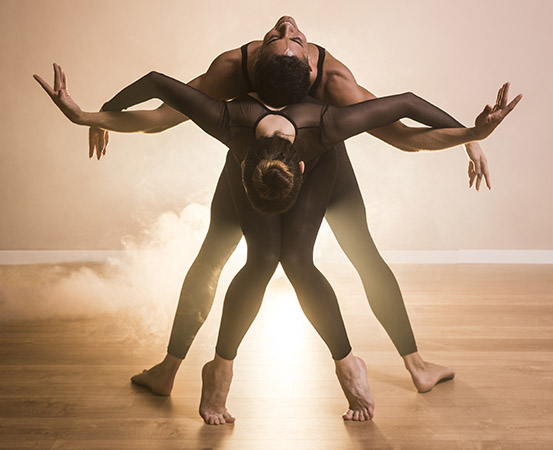
Contemporary dance is a unique form of artistic expression that combines elements of various styles, including ballet, jazz and modern dance. Apart from its inherent artistic value, contemporary dance has also gained popularity as a form of physical fitness exertion.
Unlike traditional dance forms, contemporary dance is about freedom of expression and innovation, making it an excellent means to display one’s individuality. This urge to push the envelope of expression challenges the body and mind in fascinating ways, from flexibility and balance to body awareness.
Contemporary dance and self-expression
Contemporary dance allows performers to express their inner feelings through movement without restrictions. The dancer is allowed to go beyond their imaginations or the binding structure of any of the base dance forms. It helps them break emotional walls, say exponents.
“Sometimes we find it challenging to communicate our feelings using words, or any other mediums for that matter,” says Manu Emmanuel George, a contemporary dance choreographer and trainer. “Contemporary dance makes it simple for us to let our repressed feelings out through movements.” George is also co-founder of Electro Battles Dance and Fitness Studio, Kochi, Kerala.
CS Sagar, a contemporary dance trainer and founder of Agna Dance Squad, Ernakulam, Kerala, adds: “There are rules to adhere to in contemporary dance, but there are no restrictions. The dancer has the privilege to express their innermost feelings freely to the music. It might be happiness, sadness or rage. Here, dance acts as a means for expressing one’s emotions.”
Flow movements in contemporary dance
Flexibility is the most important physical component of contemporary dance.
“Regular practice improves one’s flexibility a lot,” says Sagar. “Contemporary dance focuses primarily on flow movements; it explores how one can ‘flow’ their body through movements. Various exercises and warm-ups are incorporated into the style to make the flow of movements simple and efficient.”
The training involves imbibing flow movements into one’s muscle memory.
“Usually we play music, and the dancer should move along with it,” says George. “Long-term practice will help the body become accustomed to the flow moments and enhance muscle memory.”
It also incorporates floor techniques. The relation between the body and gravity is altered while moving on the floor. It improves the body’s flexibility while developing muscle strength, including the core region.
Mobility and body balance
The movements in contemporary dance improve mobility, which aids in developing strong body control.
“Imagine that my mobility training has given me the ability to mentally calculate the precise position at which I will end a floor roll or body roll,” says Sagar. “Mobility boosts one’s confidence because it enables the body to move effortlessly in the direction you desire.”
Mostly performed barefoot, contemporary dance improves one’s ability to sense and control specific areas of the foot that make contact with the ground.
“After jumps and twists, all movements end in the foot,” says George. “It tends to give equal balance to all your toes. As a result, it tends to build the strength of all the toes, which improves one’s daily foot movements by maintaining the overall body equilibrium.”
Body alignment and awareness
Contemporary dance helps improve body alignment.
“The body naturally gravitates towards the upright position while we stand, sit or stroll,” says George. “That’s because of how our bodies are extended while dancing. The style of dance permits flinging the body rather than controlling it.”
The fluid movements of contemporary dance automatically keep the body weight in check. “It also improves one’s understanding of the body, which motivates one to take better care of their bodies and health by limiting unhealthy habits,” says Sagar.
Better focus and observation skills
Contemporary dance choreographies can also be done in pairs, which includes multiple lifts of the partner. “Performing with a partner, you will become conscious of both their actions and your own,” says George. “It requires intense concentration to avoid injuries.
“Whatever movements you are doing, you must lift your leg and hands in a way that should look pretty. You will be more concentrated on one specific thing that you are doing. It will increase mind memory and concentration.”
Majority of the movements in contemporary dance revolves around the minute elements in music.
“It enhances the dancer’s capacity for observation,” says Sagar. “Years of training will make the dancer a careful observer of all kinds of movements and sound beats surrounding them. It helps them to portray regular life instances in the choreography.”
Takeaways
- Contemporary dance primarily focuses on freedom of expression and creativity in movement.
- It allows performers to freely express their feelings through dance moves.
- The flow movements and floor techniques in contemporary dance help improve flexibility.
- It enhances mobility, body balance, body alignment and awareness, concentration and observational skills.

















